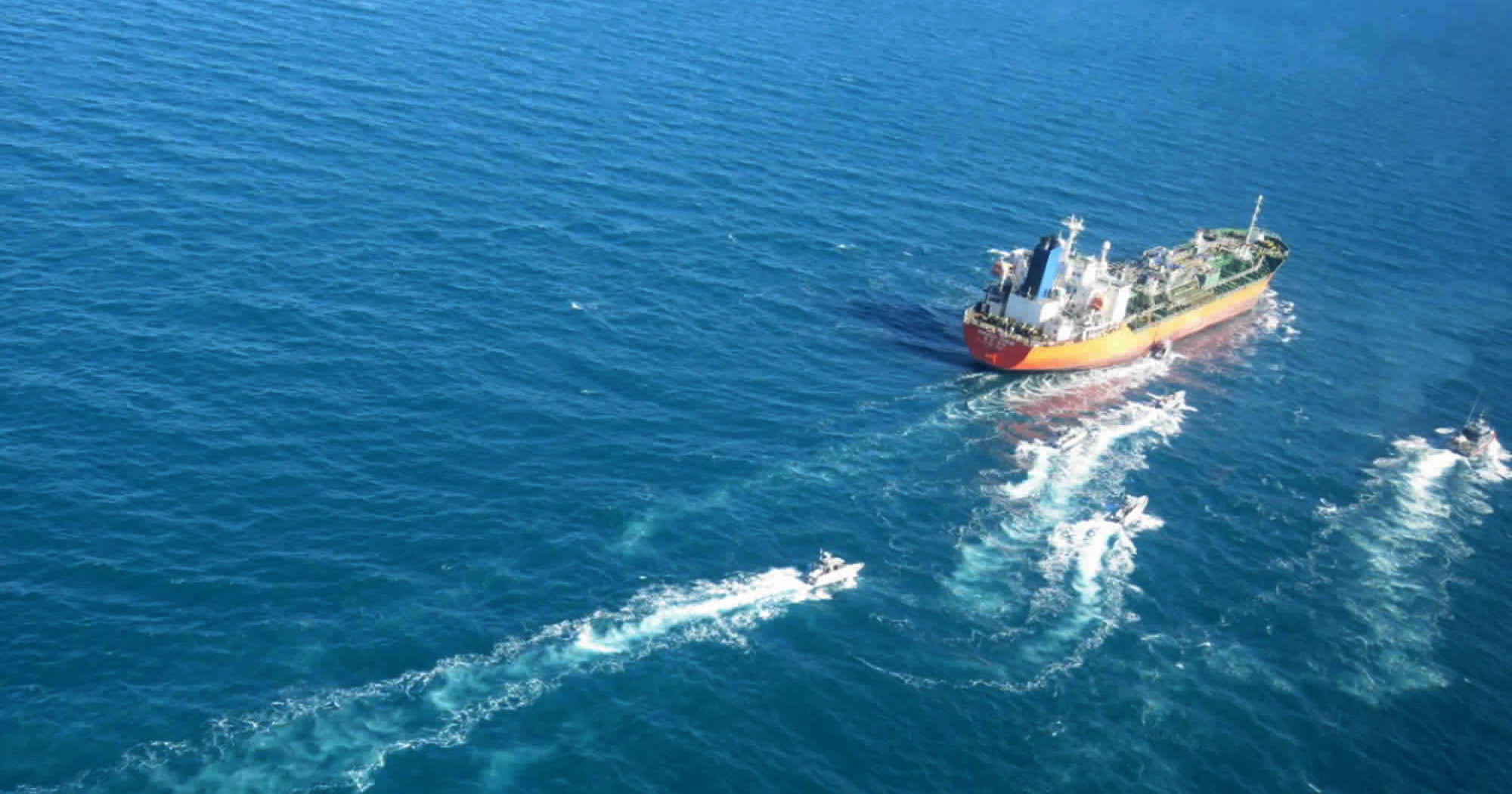
Iranian Troops Storm South Korean Ship Amid Mounting Tensions with West
Armed Iranian Revolutionary Guard troops stormed a South Korean tanker and forced the ship to change course and travel to Iran, the vessel’s owner said Tuesday, the latest maritime seizure by Tehran amid heightened tensions with the West over its nuclear program.
The military raid on Monday on the MT Hankuk Chemi was at odds with Iranian explanations that they stopped the vessel for polluting the waters of the Persian Gulf and the Strait of Hormuz.
Instead, it appeared Iran sought to increase its leverage over Seoul ahead of negotiations over billions of dollars in Iranian assets frozen in South Korean banks.
“If anybody is to be called a hostage taker, it is the South Korean government that has taken our more than $7 billion hostage under a futile pretext,” Iranian government spokesman Ali Rabiei said.
Iran on Monday also began enriching uranium up to 20 percent, a small technical step toward weapons-grade levels of 90 percent, at its underground Fordo facility.
Later on Tuesday, comments by the head of Iran’s nuclear program suggested Tehran’s current production of uranium wouldn’t reach levels needed for a nuclear weapon for over two years.
An official at DM Shipping Co. Ltd. of Busan, South Korea, who spoke to The Associated Press on condition of anonymity, offered details of the Hankuk Chemi’s seizure.
The vessel had been traveling from Jubail, Saudi Arabia, to Fujairah in the United Arab Emirates when Iranian forces reached the ship and said they would board it.
Initially, Iranian forces said they wanted to run an unspecified check on the ship, the official said.
As the vessel’s captain spoke to company security officials back in South Korea, armed Iranian troops stormed the tanker as an Iranian helicopter flew overhead, the official said.
The troops demanded the captain sail the tanker into Iranian waters over an unspecified investigation and refused to explain themselves, the official added.
The company has since been unable to reach the captain, the official said.
Security cameras installed on the ship that initially relayed footage of the scene on the deck to the company are now turned off, according to the official.
After the company lost contact with the captain, the company received an anti-piracy security alert notice, suggesting the captain activated an onboard warning system, the official said. It remains unclear if the ship tried to call for assistance.
The U.S. Navy’s Middle East-based 5th Fleet routinely patrols the area along with an American-led coalition monitoring the Strait of Hormuz, the narrow mouth of the Persian Gulf through which 20 percent of the world’s oil passes. A separate European-led fleet also operates there as well.
The official denied the vessel had been polluting the waters.
In past months Iran has sought to escalate pressure on South Korea to unlock some $7 billion in frozen assets from oil sales earned before the Trump administration tightened sanctions on the country’s oil exports.
South Korea’s Foreign Ministry said Tuesday it plans to dispatch a delegation of officials to Iran for talks on securing the release of the ship and its crew members. The crew included sailors from Indonesia, Myanmar, South Korea and Vietnam, according to the Iranian Revolutionary Guard.
South Korea’s Defense Ministry said it was also sending its anti-piracy unit to near the Strait of Hormuz — a 4,400-ton destroyer with about 300 troops.
South Korea’s presidential office said Tuesday it views Iran’s ship seizure “very gravely.”
Foreign Ministry spokesman Choi Young-sam said Iranian officials have assured South Korea that the ship’s crew were all safe. He said an Iran-based South Korean diplomat has been dispatched to the location of the detained ship.
The U.S. State Department joined South Korea in calling for the tanker’s immediate release, accusing Iran of threatening “navigational rights and freedoms” in the Persian Gulf in order to “extort the international community into relieving the pressure of sanctions.”
Last year, Iran similarly seized a British-flagged oil tanker and held it for months after one of its tankers was held off Gibraltar.
Meanwhile in Tehran, the head of the Atomic Energy Organization of Iran told state television that the Islamic Republic’s current production of 20 percent-enriched uranium would be around 9 kilograms (20 pounds) a month.
The comments by Ali Akbar Salehi mean that Iran would need over two years at that rate to have the 530 pounds needed for weapons-grade levels of 90 percent.
Also Tuesday, the Iranian military began a wide-ranging, two-day aerial drill in the country’s north, state media reported, featuring combat and surveillance unmanned aircraft, as well as naval drones dispatched from vessels in Iran’s southern waters.
State TV broadcast footage of scores of drones on a runway in the northern province of Semnan.
Iran has previously conducted drills with military drones; it routinely releases footage from surveillance drones of U.S. aircraft carriers passing through the Persian Gulf.
This week’s drill also incorporates modern “suicide drones” that hover over a battlefield before diving down to a target, the TV report said.
The Western Journal has reviewed this Associated Press story and may have altered it prior to publication to ensure that it meets our editorial standards.
Truth and Accuracy
We are committed to truth and accuracy in all of our journalism. Read our editorial standards.
Advertise with The Western Journal and reach millions of highly engaged readers, while supporting our work. Advertise Today.












